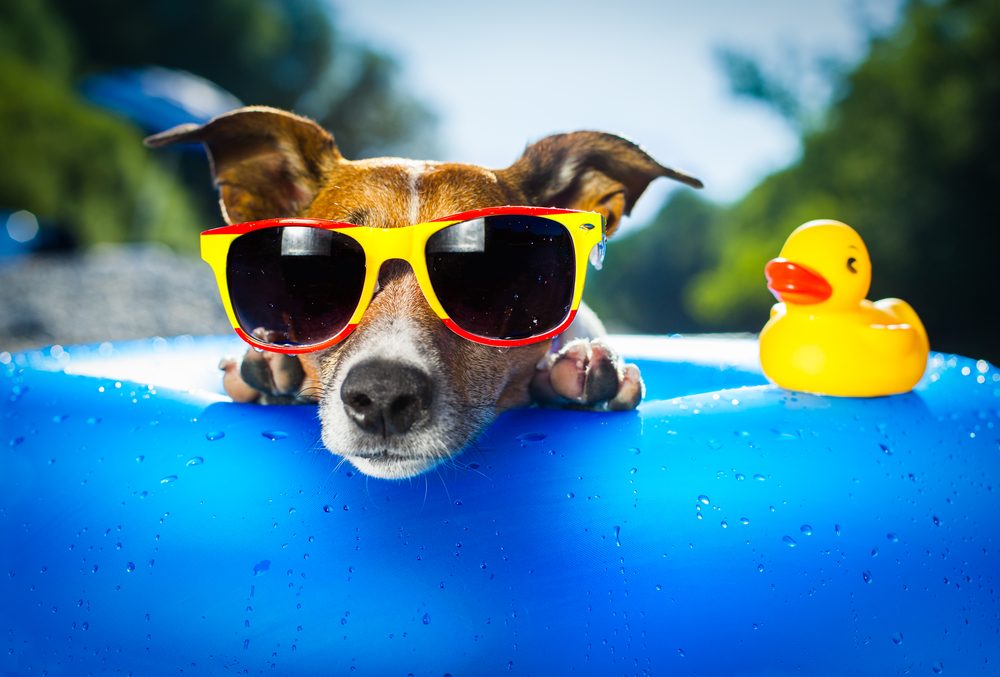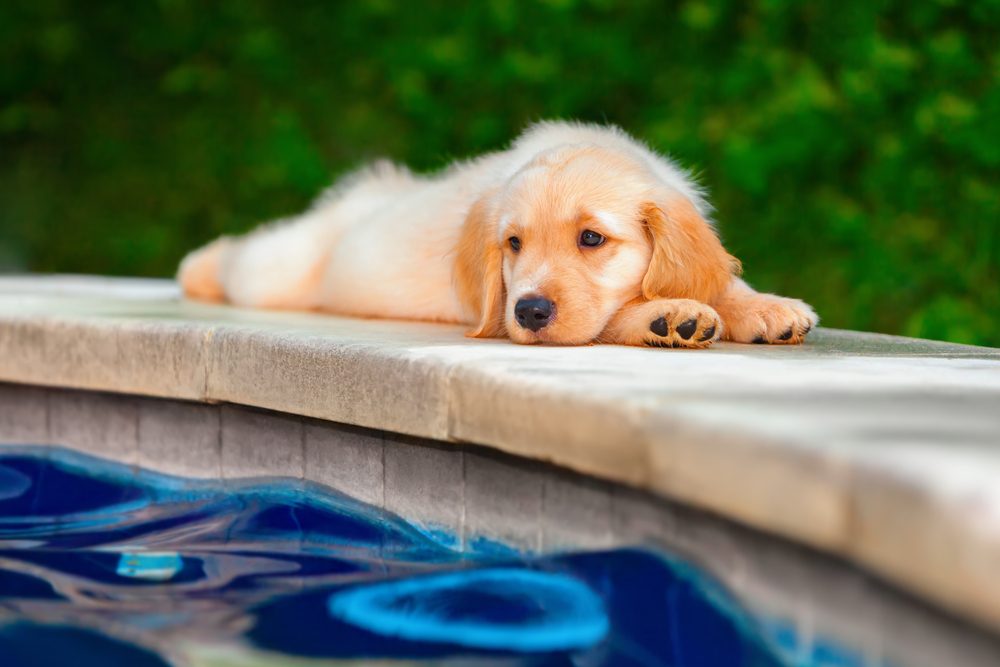If your family loves the water, it’s only natural to want your new puppy to join in all the fun, too. Whether you spend your time boating on large bodies of water or playing in the backyard pool, teaching all members of your family how to be safe around the water can give you great peace of mind.
Like humans, all dogs are different when it comes to swimming. While some breeds (think spaniels, retrievers, and labradors) were bred to work in the water, others like bulldogs, pugs, and basset hounds just aren’t built for swimming. Regardless of your dog’s breed, any pup that will be spending time around any body of water needs to be supervised at all times. If possible, it would even be great if you can give your dog swimming lessons. In the meantime, you can also learn when can your puppy sleep through the night.
Start young
The younger your puppy is when you introduce them to water, the better. Puppies can be taught to swim as early as 10 weeks of age. Depending on the time of year and your access to water, even playtime in shallow tub water can be a great first step.
Remember, positive reinforcement is key. Progress at your puppy’s comfort level. Reward him with praise and treats as he becomes more comfortable in the water.
Invest in the right accessories
One of the safest things you can do is get your dog used to wearing a personal flotation device (PFD) every time they are around water. Not only will a life jacket give him the confidence he needs to venture out into the water, it will also protect him should an accident occur.
Look for a PFD with handles and a leash attachment, then follow the manufacturer’s sizing chart to buy your dog the right size. Once you’ve made your purchase, put it on and let your dog romp around inside to get used to how it feels. Reward him with praise and a small treat after each successful session.
You might also want to purchase a few water toys. Those that double as a great fetch toy on land will be beneficial in encouraging your dog to retrieve in the water, too.

Take baby steps
Once your dog is used to wearing his PFD and you’ve found a quiet place to begin training, start slowly in the shallow end of the pool or on shore. Use treats to entice him to step in and get his feet wet. Be patient. Resist the urge to throw him in as this can teach him to fear the process altogether.
Once he is comfortable standing in shallow water, encourage him to follow you into deeper water. If your dog has a favorite (floatable) toy, throw it a few feet in front of him and encourage him to retrieve it.
Again, patience is key. Acclimating your puppy to water will likely take several days. If he seems to be overwhelmed by the size of the pool — and some dogs are — start by having him stand in an empty kiddie pool while you slowly fill it with water. Limit your swimming lessons to short sessions of five to 10 minutes a day so he can build up his swimming muscles gradually.
Show him the exit
One of the first things you need to teach your pup, especially if he will be swimming in a pool most of the time, is to teach him how to get out. That way, if he accidentally falls in when you’re not around, he’ll know exactly how to get to dry land.
Because your puppy likely won’t be using the pool ladder, begin by teaching him how to walk in and out of the pool using the steps. After he learns, carry him a few feet away from the edge and have him swim to someone on the steps. Repeat the process from different points in the pool until he learns how to find the steps by himself.

Always supervise
Even the best swimmers can tire or get injured in the water so it’s important to never let your dog swim unattended. Keep the entrance to the pool area locked so your dog can’t access it when you’re not outside with him.
Rinse off after each swim
Whether it’s pool or lake water, rinsing your dog off after each swim is the best way to remove any harsh chemicals or dirt on their coat. It’s also a great bonding exercise, especially when you shower him with love and praise during the process.
Use an absorbent towel to dry their fur as much as possible, making sure to remove any water or debris in their ears, as well. This helps prevent matting and reduces the risk of ear infections, especially in dogs with floppy ears.
Finally, have fun!
Your dog loves being around you and members of the family so make swim time enjoyable. Not all dogs like the water no matter how much you coax them, so be sure to follow your dog’s lead. If, to your dismay, he’d rather watch you splash around with all four paws firmly planted on terra firma, find ways to include him so he feels safe and protected. With the right planning and precautions, your puppy can happily enjoy family swim time for years to come.


